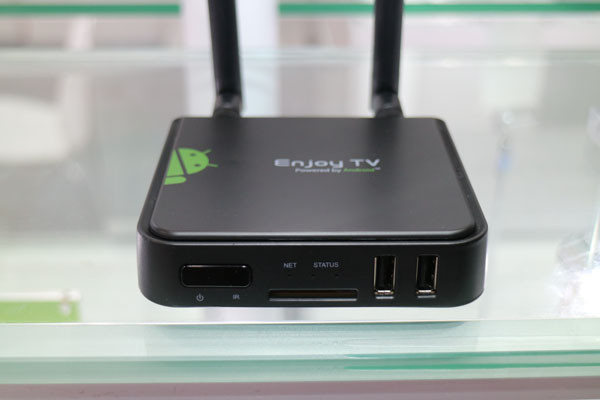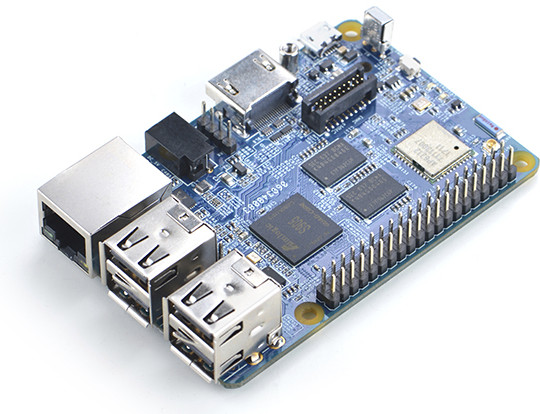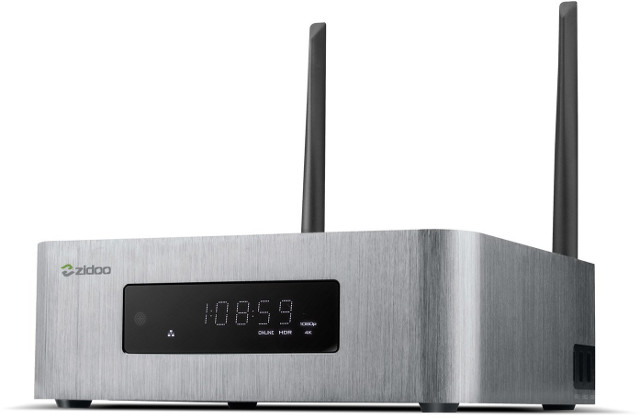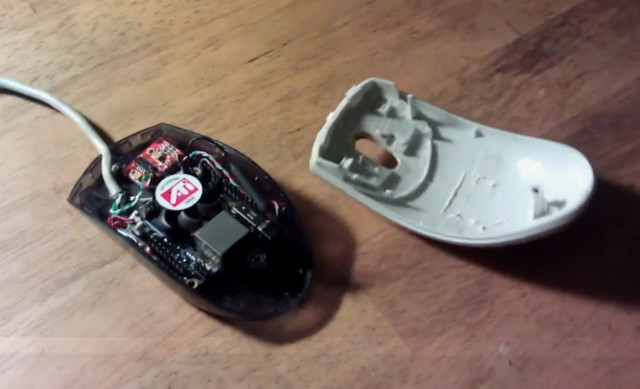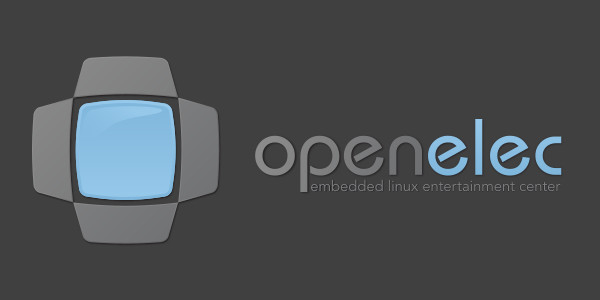In many countries, people get broadband Internet via ADSL or “fiber to the home”, but in some regions, notably the Middle East and Africa, there may not be such option, and people instead rely on cellular networks like 4G LTE for their Internet access. I’ve already covered SDMC TV boxes with a 4G LTE connectivity, but there’s now one more option thanks to Geniatech ATV329 Android TV box powered by Amlogic S905 processor, and including a 4G LTE modem & a SIM card slot. Geniatech Enjoy TV Nano ATV329 specifications: SoC – Amlogic S905 quad core ARM Cortex-A53 @ up to 1.5 GHz with a penta-core Mali-450MP GPU System Memory – 1GB DDR3 Storage – 8GB eMMC flash, SD card slot Video & Audio Output – HDMI 2.0 port Connectivity Ethernet 802.11 b/g/n Wi-Fi + Bluetooth 4.0 (AP6212) with one external antenna GSM, 3G, and 4G connectivity with one external […]
Particle Asset Tracker Kit v2 2G/3G GPS Location Tracker Supports Grove Modules
Particle, the maker of IoT boards such as Electron 2G/3G module, has launched it second Asset Tracker Kit – based on Electron – with a smaller case, improved GPS performance, satellite support for GPS, GLONASS, Galileo & BeiDou, and compatibility with Seeed Studio Grove modules. Asset Tracker Kit v2 hardware specifications: MCU – STMciro STM32F205 ARM Cortex M3 micro-controller @ @ 120 MHz with 1MB Flash, 128K RAM Cellular Connectivity – U-Blox SARA U-series (3G) or G-series (2G) modem + NanoSIM card slot + u.FL connector for Antenna Location 72-channel u-bloxM8 engine with support for GPS/QZSS L1 C/A, GLONASS L10F, BeiDou B1I, Galileo E1B/C, SBAS L1 C/A: WAAS, EGNOS, MSAS, GAGAN Update rates: Single GNSS: up to 18 Hz, 2 Concurrent GNSS: up to 10 Hz Position accuracy of 2.5 m, sensitivity of -167 dBm Acquisition times: Cold starts: 26s, Aided starts: 2s, Reacquisition: 1s On board ceramic GPS antenna […]
$40 NanoPi K2 Board Powered by Amlogic S905 Processor Competes with ODROID-C2, Raspberry Pi 3
Hardkernel ODROID-C2 board is getting some direct competition with FriendlyELEC’s NanoPi K2 development board powered with Amlogic S905 processor with 2GB RAM, a very similar form factor, and many of the same features, which together with Khadas Vim (Pro) brings the number of low cost Amlogic based development boards to three. NanoPi K2 board specifications with differences compared to ODROID-C2 highlighted in bold or stricken-through: SoC – Amlogic S905 quad core cortex-A53 processor @ 1.5 GHz with penta core Mali-450MP GPU System Memory – 2GB DDR3 Storage – eMMC module socket, micro SD slot Video Output – HDMI 2.0 up to 4K @ 60 Hz Connectivity – Gigabit Ethernet (Realtek RTL8211F), 802.11 b/g/n WiFi + Bluetooth 4.0 (AP6212 module) with chip antenna + IPX connector USB – 4x USB 2.0 host ports (GL825G USB hub) + micro USB OTG port for power and adata Expansion Header 40-pin header with GPIO, […]
MYIR MYS-6ULX is a $25 Single Board Computer based on NXP i.MX 6ULL/6UL Processor for IoT and Industry 4.0
MYIR Tech has released MYS-6ULX single board computer based on NXP i.MX 6ULL/6UL Cortex-A7 processor designed for either Industry 4.0 with MYS-6ULX-IND model, or the Internet of Things for MYS-6ULX-IOT. Both boards include 256MB DDR3 SDRAM, 256MB NAND flash, USB, USB, Ethernet, LCD interfaces and more, in a compact 70 x 55mm form factor. Both boards have very similar specifications. Features MYS-6ULX-IND MYS-6ULX-IOT SoC NXP i.MX 6UltraLite (MCIMX6G2CVM05AA) with an ARM Cortex A7 processor @ up to 696 MHz and 2D graphics accelerator NXP i.MX 6ULL (MCIMX6Y2DVM05AA) with an ARM Cortex A7 processor @ 528 MHz and 2D graphics accelerator DDR3 256MB (support up to 2GB) NAND Flash 256MB (support 512MB/1GB) eMMC DNP (Do Not Populate – Reserved design for optional 4GB flash) Ethernet 10/100Mbps USB 1x USB Host, 1x micro USB OTG Micro SD Card 1x Micro SD card slot Buttons 1x Reset Button, 1x User Button LED 1x Power Indicator, 2x […]
ESP8266, Mongoose OS & Grove Sensors – An Alternative Solution for Hackathons
CNXSoft: This is a guest post by Cesanta If you walked into any Hardware hackathon over the last year, you would see they are about innovation and bringing new ideas to this world and most of them are centered around the connected devices nowadays. However, just walk the floor, talk to the teams and you can quickly see an elephant in the room. The Hackathons are about connected devices, but with the ‘recommended’ and frequently sponsored hardware distributed to the teams such as Intel Galileo, Raspberry Pi, etc…. developers may struggle for a long time to even connect it to the cloud! Not to mention the innovation is usually hindered by a tedious environment setup which takes hours, things to learn about the specific hardware and how it can be programmed using low level languages. So many teams spent most of the time fighting with those issues and oftentimes still […]
Zidoo X10 Android & OpenWrt TV Box with 3.5″ SATA Bay Sells for $229
Zidoo has sold two TV boxes based on Realtek RTD1295 so far with Zidoo X9S and Zidoo X8, and the company has done a pretty good job based on my review of Zidoo X9S. Both models run Android 6.0 with HDMI input recording and broadcasting functions, as well as OpenWrt for NAS functions, with X8 model relying on USB 3.0 storage, and X9S adding an external SATA port. It would be nice to have a model with an internal SATA bay, and it’s exactly what Zidoo X10 brings to the table. Zidoo X10 specifications with highlights in bold showing differences with Zidoo X9S: SoC – Realtek RTD1295 quad core Cortex A53 processor with ARM Mali-T820 MP3 GPU System Memory – 2GB DDR3 Storage – 16GB eMMC flash + micro SD slot up to 32GB + SATA 3.0 bay for 3.5″ hard drives Video I/O – HDMI 2.0a output up to […]
No Case for Orange Pi Zero or Other Tiny Development Boards? No problem: Use an Old Mouse
There now plenty of tiny ARM Linux boards, which are normally sold without case, but usually it’s not to hard to find a 3D printed case. But if you have small board, and don’t feel to purchase a case for it, there’s an other solution: use an old mouse. That’s exactly what Slider2732 has done with his Orange Pi Zero board to convert it to a mini PC running Armbian, or a game console running RetroOrangePi. So after the keyboard PC, here comes the mouse PC! So what did he exactly use for the mouse PC? Orange Pi Zero board An old Logitech mouse for the case and cable An 8GB micro SD card to flash the operating system A 4.3″ car reversing monitor (optional) acting as the display with composite input An Rii wireless keyboard/mouse, as the mouse function is not included with the mouse PC… A PAM8403 based […]
OpenELEC 8.0 Released with WeTek Play 2 & Hub, and Raspberry Pi Zero W Support
In recent months, I’ve written more about LibreELEC, a fork of OpenELEC, but the latter project is still being worked on, and OpenELEC 8.0 has been released adding builds for WeTek Play 2 & WeTek Hub TV boxes, as well as Raspberry Pi Zero W board, and upgrading to Kodi 17.1. and newer packages such as Linux 4.9 and ffmpeg 3.2. The developers also removed some unused or dropped features such as HFS and HFS+ filesystem, iSCSI, NFS/NBD/iSCSI network boot, and LIRC. X11 AMDGPU, ATI (Radeon) and Intel GPU driver driver has been replaced by X11 Modesettings GPU driver. They also updated some drivers & firmware files for WLAN and DVB, as well as update Nvidia Legacy driver to xf86-video-nvidia-340 (VDPAU only supported now). You can download or update OpenELEC 8.0, not only for the new WeTek and Raspberry Pi platforms, but for also x86 64-bit images for Intel & […]


